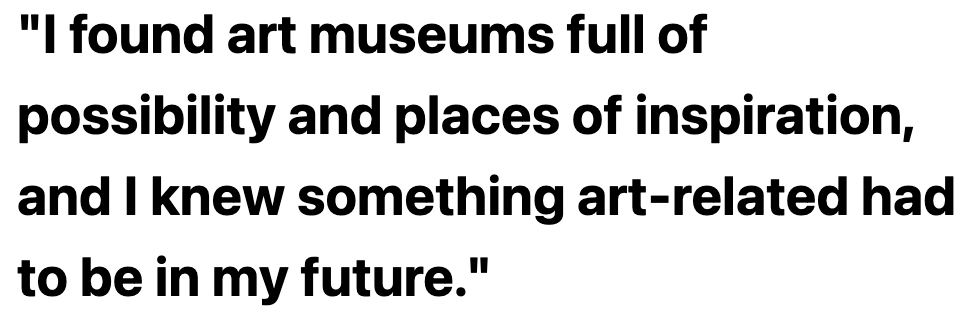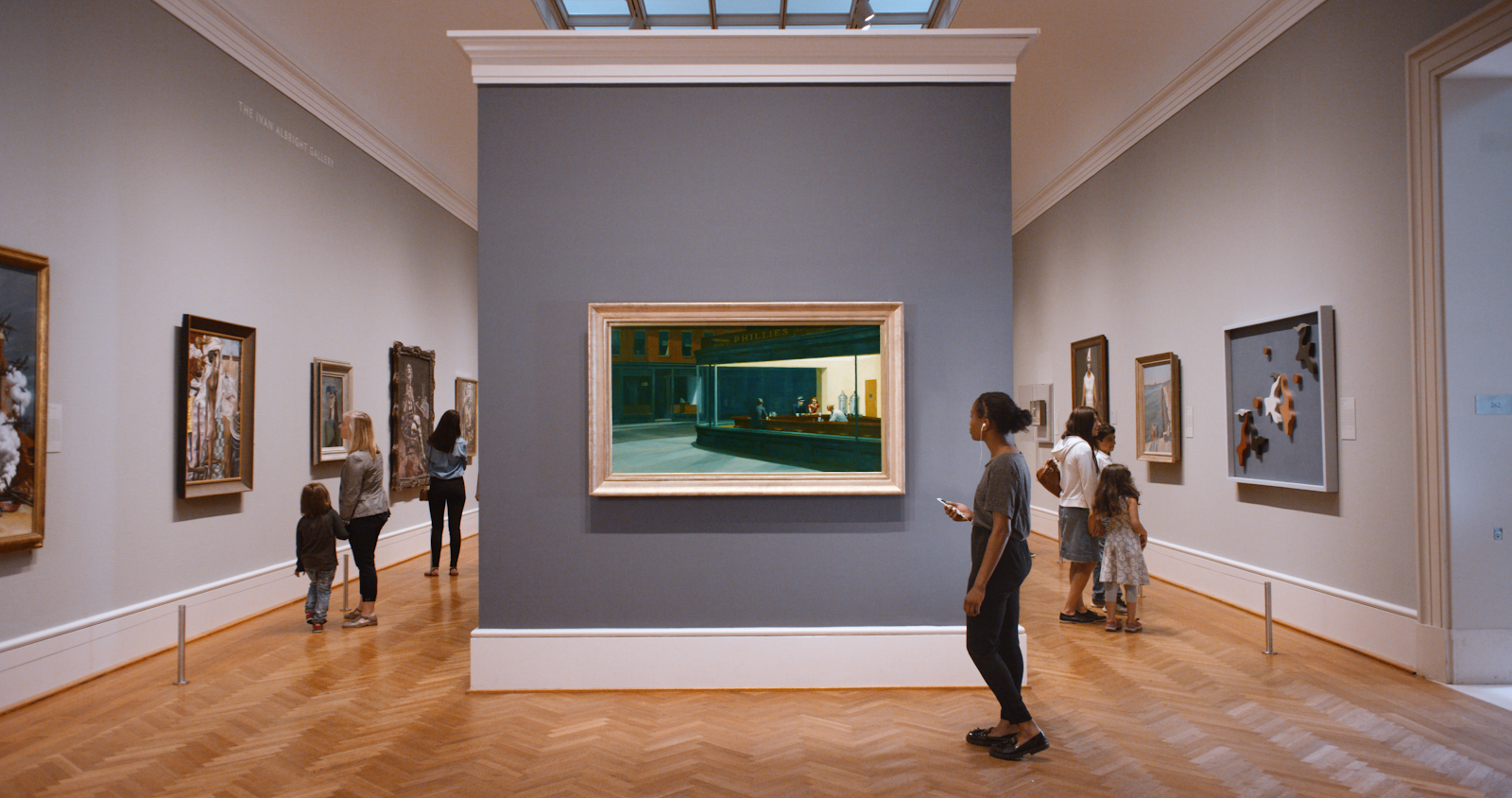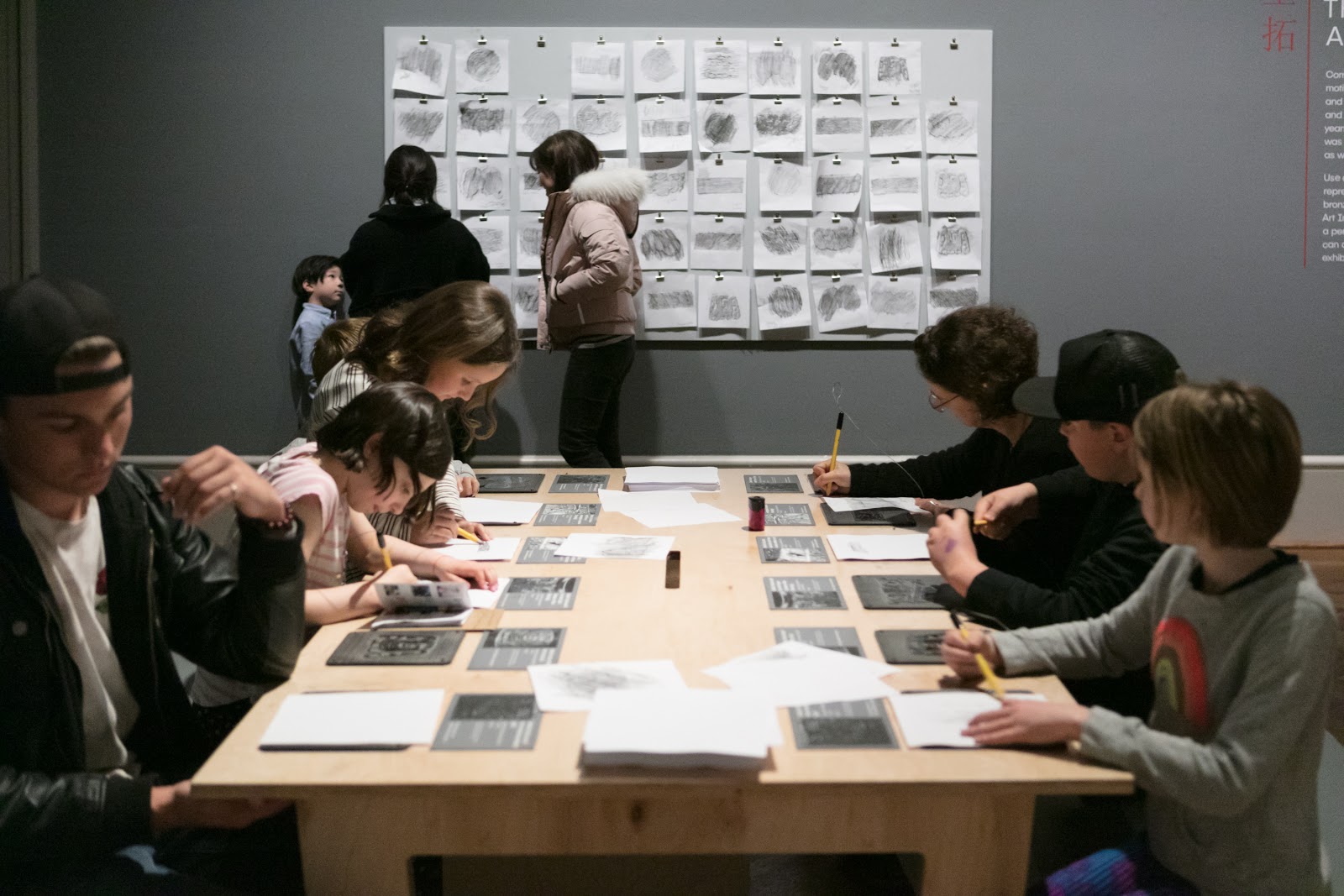
Why Emily’s a Hawk to Watch:
If a picture is worth a thousand words, the person shaping the stories they tell must be worth millions. Emily Lew Fry, University of Kansas School of Fine Arts alum and director of interpretation at the Art Institute of Chicago, does just that.
Emily’s role is fairly uncommon (though she says the field is growing) and many folks from outside the art world have probably never heard of it. However, the importance of her work cannot be understated. In her words, she ensures that “you don’t have to be a specialist in art history in order to connect with the material presented,” making galleries and exhibits accessible, and helping to foster connections with those who may not think a museum holds purpose for them.
While the subtleties of her work may go unnoticed by the casual consumer — an infamous characteristic of artwork in general — perhaps this is the point. Artistic interpretation is often as emotional as it is visual, and each viewer’s personal relationship with a piece is shaped by their own experiences — making Emily’s job crucial to the success of an art museum in the 21st Century.
Read Emily’s journey from high school to KU and beyond, her favorite part of creating artistic connections with patrons, and how her time studying in the Department of History of Art and working at the Spencer Museum of Art propelled her to the job she has today. See why Emily is a Hawk to Watch.
Tell us in a sentence or two what you do for a living:
As Executive Director of Interpretation, I lead on creating experiences that help audiences build connections with works of art at the Art Institute of Chicago. Through the lens of inclusion and access, I work with curatorial and design teams to uncover the storytelling potential of objects. Often the written material or labeling that accompanies a work of art, audio stops that provide insight into artistic process or broader exhibition themes, or other narrative elements have had input from my team. Daily tours and gallery conversations are also reflective of my team’s knowledge of the collectionand progressive pedagogical practices.
How did you end up doing what you do? Was there a certain moment when things came together, or was it a longer journey?

Since high school and even earlier than that, I loved making art, especially learning about the lives of artists and their social and cultural contexts. I found art museums full of possibility and places of inspiration, and I knew something art-related had to be in my future. Entering the University of Kansas, I worked at the Spencer Art Museum and enrolled in the School of Fine Arts. The rigor of the classroom in addition to working within a museum was foundational for me to imagine a role in the art museum field.

It wasn’t until I landed a part-time position at the Nelson-Atkins Museum of Art after graduate school that I learned about the field of Art Museum Interpretation. Making relevant connections between artworks and audiences is central to this work, and it’s so important for me to be in a position to help art museums be more equitable, accessible sites, not elite areas for audiences with specific knowledge sets.
What is the most rewarding part about your job?
Observing visitors in the galleries having a-ha! moment with art is truly the most rewarding part of my job, and I’ve been fortunate to have worked at enough art museums across the country to experience this feeling. A high point is working on several landmark exhibitions and informing the reinterpretation of some of the most iconic works of art, but one of my favorite aspects is being part of the museum’s equity efforts.

I chaired the Narratives and Content working group which is a forum that discusses how and what narratives we tell in the galleries and in our online spaces. We ask what stories are we not telling, and why? What requires reconsideration? What are barriers for engagement in the galleries? How can we select and present narratives that resonate with audiences who don’t see the museum as a place for them?

What’s your lowest career moment and how did you pick yourself up and move on?
Museums can be extremely hierarchical. I remember early in my career being chastised by a staff member for oversimplifying (they used a different phrase) information, and I recall thinking that if I were ever in a position to mentor and manage staff, that is exactly not how I would act. Since then, I’ve tried my best to support my team, ensuring they feel empowered, that they have a voice, and can bring their whole selves to their work. So many museum professionals have thoughtfully mentored me to this point in my career, and I want to pay it forward by supporting staff, interns, and fellows in any way possible.
Where do you hope to be in 10 years?
I hope to be continually learning in my job, whether that is in an art museum or an adjacent but overlapping sector. I’d love to be part of the main leadership of an art museum and advance strategis efforts either through a renewed look at the exhibition program or audience engagement strategy.
What do you know now that you wish you could tell your 18-year-old self?
Museums are dynamic, demanding constant reconsideration. Often the job you want may not yet exist, but if you are an active learner and embrace opportunities, you never know where you will end up. I would tell myself to consider how museum skills can extend past the arts sector and into other organizations that might benefit from audience engagement or narrative development.
What’s your best career pro-tip?

Be kind and support others along the way. The museum world can feel small but vast in many ways. I have had so many full-circle moments working with colleagues at different institutions in various capacities; you never know who you might reconnect with in the future, so lead with kindness and empathy.
How did your KU degree prepare you for your current job?

My experience at KU gave me the foundational knowledge about art history and artmaking to be successful in my work today. Because I’ve had the experience of welding and printmaking, I can describe those processes to visitors or determine what specialized terms require unpacking. I’m grateful to have had such an amazing studio experience alongside the rigor of art history courses. I still think fondly about the American Art seminars I took with Charles Eldredge, the Cubism seminar by David Cateforis (in which I did not do well, but it taught me how to be a better reader and writer), and the lectures on symbolism inherent in Dutch and Flemish art by Linda Stone Ferrier. They probably don’t remember me, but I still recall their storytelling around objects, and it made a huge imprint on how I approach and think about art with audiences at the Art institute.
What do you do after you’ve clocked out?
Maybe it’s a holdover from working remotely, but I truly aim to “log off” at 5:00 p.m. and spend time with my two young daughters who keep me on my toes.
What is a fun fact about you that surprises people?
Considering this context, it might be surprising that I married a Mizzou alum!
Meet more of our Hawks to Watch. For more information, visit the School of the Arts and the Department of History of Art at the University of Kansas. Explore the Art Institute of Chicago and the Nelson-Atkins Museum of Art.